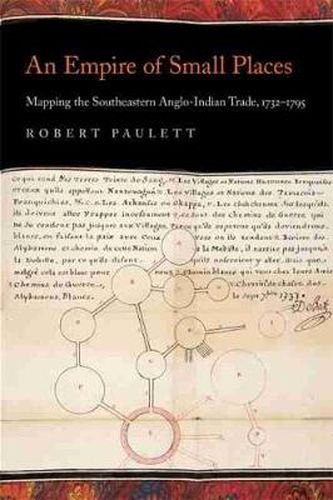Readings Newsletter
Become a Readings Member to make your shopping experience even easier.
Sign in or sign up for free!
You’re not far away from qualifying for FREE standard shipping within Australia
You’ve qualified for FREE standard shipping within Australia
The cart is loading…






How Europeans, Africans, and Indians created the early southern landscape
Britain’s colonial empire in southeastern North America relied on the cultivation and maintenance of economic and political ties with the numerous powerful Indian confederacies of the region. Those ties in turn relied on British traders adapting to Indian ideas of landscape and power. In An Empire of Small Places, Robert Paulett examines this interaction over the course of the eighteenth century, drawing attention to the ways that conceptions of space competed, overlapped, and changed. He encourages us to understand the early American South as a landscape made by interactions among American Indians, European Americans, and enslaved African American laborers. /
Focusing especially on the Anglo-Creek-Chickasaw route that ran from the coast through Augusta to present-day Mississippi and Tennessee, Paulett finds that the deerskin trade produced a sense of spatial and human relationships that did not easily fit into Britain’s imperial ideas and thus forced the British to consciously articulate what made for a proper realm. He develops this argument in chapters about five specific kinds of places: the imagined spaces of British maps and the lived spaces of the Savannah River, the town of Augusta, traders’ paths, and trading houses. In each case, the trade’s practical demands privileged Indian, African, and non-elite European attitudes toward place. After the Revolution, the new United States created a different model for the Southeast that sought to establish a new system of Indian-white relationships oriented around individual neighborhoods.
$9.00 standard shipping within Australia
FREE standard shipping within Australia for orders over $100.00
Express & International shipping calculated at checkout
How Europeans, Africans, and Indians created the early southern landscape
Britain’s colonial empire in southeastern North America relied on the cultivation and maintenance of economic and political ties with the numerous powerful Indian confederacies of the region. Those ties in turn relied on British traders adapting to Indian ideas of landscape and power. In An Empire of Small Places, Robert Paulett examines this interaction over the course of the eighteenth century, drawing attention to the ways that conceptions of space competed, overlapped, and changed. He encourages us to understand the early American South as a landscape made by interactions among American Indians, European Americans, and enslaved African American laborers. /
Focusing especially on the Anglo-Creek-Chickasaw route that ran from the coast through Augusta to present-day Mississippi and Tennessee, Paulett finds that the deerskin trade produced a sense of spatial and human relationships that did not easily fit into Britain’s imperial ideas and thus forced the British to consciously articulate what made for a proper realm. He develops this argument in chapters about five specific kinds of places: the imagined spaces of British maps and the lived spaces of the Savannah River, the town of Augusta, traders’ paths, and trading houses. In each case, the trade’s practical demands privileged Indian, African, and non-elite European attitudes toward place. After the Revolution, the new United States created a different model for the Southeast that sought to establish a new system of Indian-white relationships oriented around individual neighborhoods.